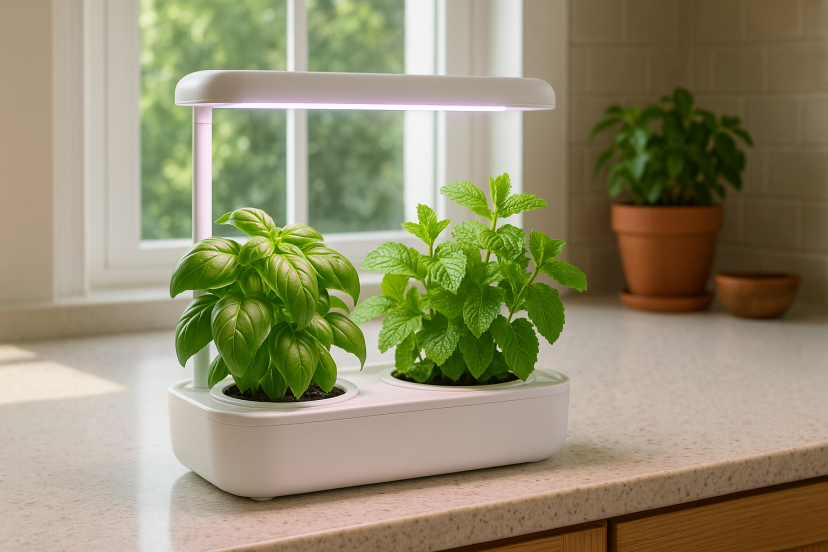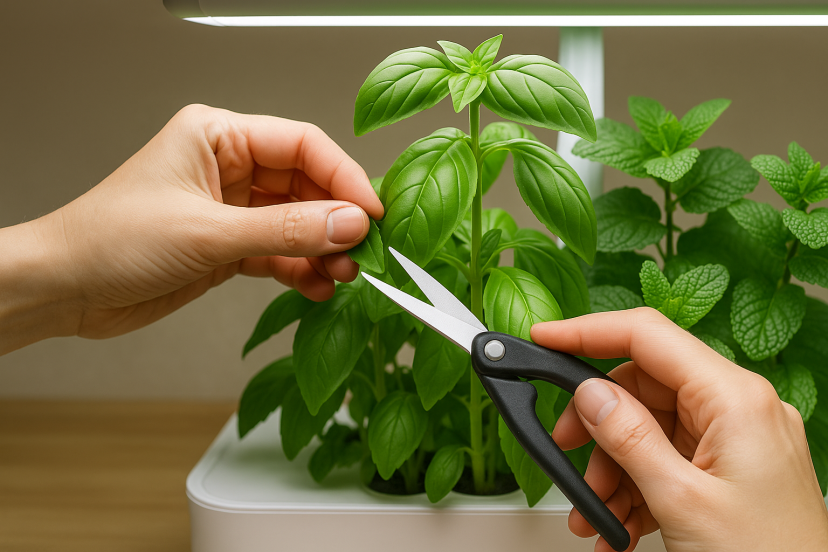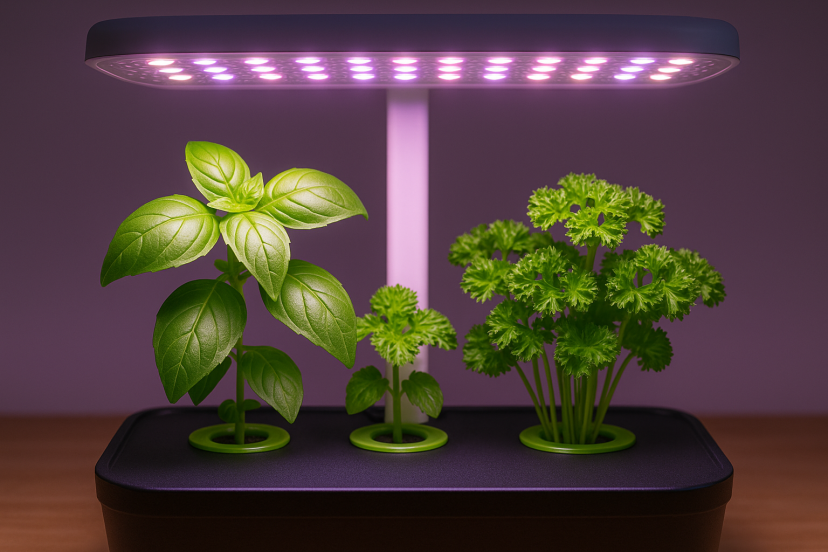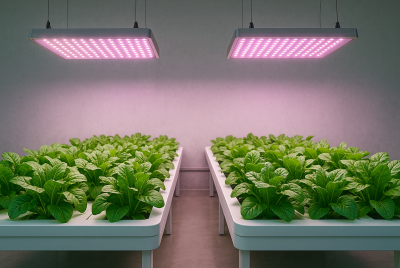5 Tips To Improve Your Hydroponic Indoor Herb Garden
We may earn a commission for purchases made using our links. Please see our disclosure for more details.
Growing an indoor herb garden can be exciting, especially when you imagine fresh basil or mint right at your fingertips. But it often takes more than water and sunlight to keep your plants happy. Hydroponics makes it easier to control how your herbs grow—helping them stay healthy, green, and full of flavor. With just a few smart tweaks, you can turn your setup into a thriving mini garden that grows year-round. Here are five simple tips to make your hydroponic indoor herb garden stronger and more productive.
Tip 1: Choose the Right Light and Maintain It
Lighting is one of the most key elements of hydroponic gardening. Even if your setup includes built-in LEDs, positioning and brightness are important considerations. Your lights should cover the entire canopy, and the proper wavelength is critical. Full-spectrum or red/blue-balanced LED grow lights resemble natural sunshine and promote proper photosynthesis. As your herbs grow, increase the lights so that the bottom leaves do not remain shaded. Want to go deeper into lighting options? Check out our full guide on hydroponic grow lights.
Tip 2: Match Your Herbs to the Hydroponic System
Not all herbs want the same setup. Some herbs, such as basil, parsley, and cilantro, flourish in nutrient film or deep water culture environments. Others, such as rosemary and thyme, prefer less moisture and more air around their roots. If you’re blending herbs, be sure the faster growers don’t crowd the slower ones. Choosing the right fit results in fewer issues and higher yields.
Tip 3: Keep Nutrients and pH Balanced
In hydroponics, your water is your soil. That means every drop needs to have the right nutrients and pH. Aim for a pH between 5.5 and 6.5 and check it weekly. Use nutrient mixes designed for herbs or leafy greens, and refresh the water every two to four weeks. Don’t forget to clean your reservoir—algae and buildup can harm your plants.
Tip 4: Manage Water, Air, and Temperature
Herbs grow best when their roots can breathe. Make sure your system provides enough oxygen in the water. A small air pump or bubbler can help. Keep your indoor temperature between 65–75°F (18–24°C), and use a fan for gentle airflow. This helps prevent mold and encourages sturdy stems. Avoid placing your system near heat sources or cold drafts.
Tip 5: Harvest and Maintain Regularly
Your plants need attention even when they look perfect. Check water levels often, trim overgrown herbs, and harvest frequently to encourage new growth. Don’t let roots sit in dirty water—fresh solutions mean healthy roots. The more you care for your system, the more flavor and freshness you’ll get in return.

Recommended Hydroponic Kits
- VEVOR Hydroponic Growing System with Grow Light: Large setup for serious herb growers.
- 35-Plant Tower Garden Vertical Planter: Space-saving system perfect for apartment use.
- Awesome Plant 6Pro Indoor Hydroponic Garden: Compact and beginner-friendly.
- Hydroponic Starter Kit: Includes seeds and nutrients for first-time growers.
- Hydroponics Growing System: Mid-range option with built-in lighting.
Each system is great for boosting your indoor herb garden’s growth potential.
Best Herbs to Start With for Beginners
If you’re new to hydroponic gardening, start with herbs that grow quickly and are forgiving while you learn. These plants adapt easily to nutrient changes and lighting conditions, making them perfect for first-time growers.
Here’s a quick guide to beginner-friendly herbs and what makes each one special:
| Herb | Growth Traits | Why It’s Great for Hydroponics |
| Basil | Fast-growing, loves warm light | Thrives in nutrient-rich water; great aroma and flavor |
| Mint | Hardy and spreads quickly | Tolerates cooler temperatures and uneven lighting |
| Parsley | Steady grower, compact leaves | Tolerates minor pH swings and limited light |
| Cilantro | Quick to sprout, prefers moderate temps | Produces rich aroma; ideal for continuous harvesting |
| Chives | Slow but steady growth | Compact size fits small hydroponic systems easily |
💡 Pro Tip: Start with 2–3 easy herbs like basil, mint, and parsley before experimenting with trickier ones like rosemary or thyme. Once you get the hang of nutrient balance and lighting, you can diversify your indoor garden with more demanding plants.

Harvesting Tips for Better Flavor and Regrowth
Harvesting is more than just picking leaves—it’s about helping your herbs stay productive and flavorful. The way you trim them determines how well they grow back.
Follow these quick harvesting tips:
- Cut, don’t pluck: Always use clean scissors or pruning shears. Trim slightly above where a pair of leaves meet to help the plant grow new stems and fuller branches.
- Top trimming works best: For basil, trim from the top instead of the base to keep it full and bushy.
- Morning harvest = best flavor: Essential oils are strongest in the morning, so that’s the best time to harvest for rich taste.
- Don’t wait too long: Frequent light trimming prevents herbs like mint and parsley from getting tall or leggy.
- Harvest for regrowth: Cutting small amounts regularly stimulates continuous production throughout the year.
If you treat your herbs with gentle, consistent care, they’ll reward you with lush growth and bold flavor—ready for every meal, straight from your indoor garden.
Hydroponics Grows Better Herbs Than Soil
A 2021 study on hydroponic and soil systems found that hydroponic setups help plants grow faster and healthier while using much less water. Researchers compared both methods and discovered that hydroponics produced higher-quality crops in controlled indoor spaces. For anyone growing herbs at home, this means hydroponics can give you more yield in less time. Your basil, parsley, or mint can thrive even if you have limited space or no outdoor garden. The study also showed how efficient hydroponics can be with nutrients and energy, making it ideal for eco-conscious gardeners. So if you’re serious about your indoor herb garden, investing in a simple deep water culture or nutrient film system can make a big difference.

The Right Light Can Transform Your Herb Garden
A 2025 study on basil proved that the color and strength of your grow light can change how your herbs grow and taste. The researchers found that red and green light helped basil grow faster, while blue light boosted flavor and nutrients by increasing antioxidants. In simple terms, red and green light build strong, leafy plants, but blue light gives them more flavor and aroma. If you use LED grow lights, try using full-spectrum or adjustable ones that include all three colors. This balance helps your herbs stay healthy, flavorful, and rich in nutrients. So, think of light as more than just brightness—it’s the secret ingredient that brings your indoor herb garden to life.
Conclusion
With the right mix of light, nutrients, and care, your hydroponic indoor herb garden can thrive all year. Focus on light quality, nutrient balance, and steady maintenance. The payoff? Fresh, flavorful herbs at your fingertips—without stepping outside. So go ahead, try these tips, and watch your indoor herb garden come alive.
FAQ
1. Can I grow herbs year-round indoors?
Yes! Hydroponics lets you control light, water, and nutrients, so you can grow herbs anytime.
2. Which herbs thrive the most in a hydroponic garden?
Basil, parsley, mint, and chives grow quickly and do well in most hydroponic systems.
3. How frequently should the nutrient water be replaced?
Every 2–4 weeks, or sooner if the water smells or turns cloudy.
4. How much daily light do hydroponic herbs need to grow well?
Around 12–16 hours of full-spectrum LED light daily for healthy growth.
5. Why do my herbs look pale or slow?
It could be low light, poor nutrients, or incorrect pH. Adjust your setup and monitor regularly.




